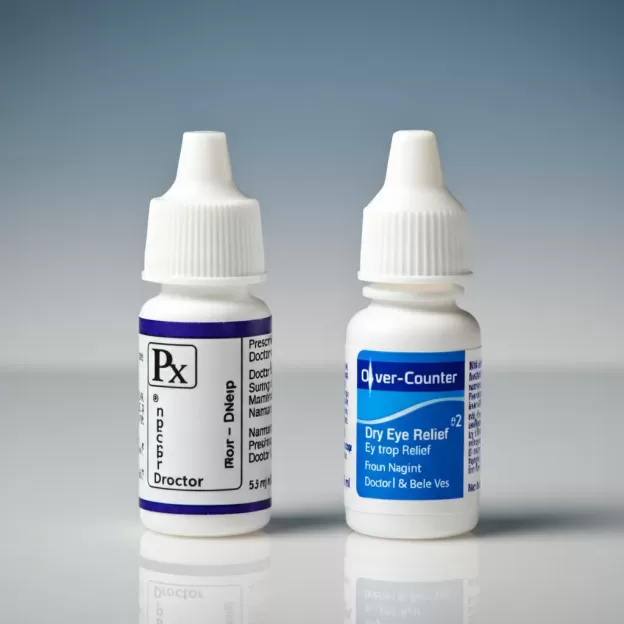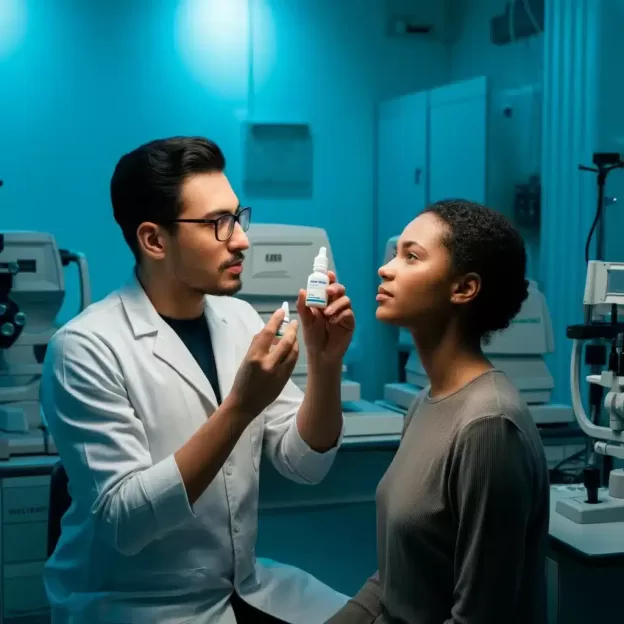Dry Eyes, Eye Protection, mypear
Myths About Eye Drops You Need to Stop Believing
Eye drops are a quick fix for caring for the eyes. They combat dryness and irritation and control allergies and redness. They’re a straightforward and affordable solution.
Even though eye drops are common, many people still do not understand how they work. This can lead to misuse, doubt, or confusion.
In this blog post, we will help you better understand and put to rest some common myths and misconceptions you hear about eye drops to help ensure you use them safely and effectively. We’ll also share advice for choosing and using eye drops to help you make the best choices for your eyes.
Common Myths About Eye Drops
Myth 1: All Eye Drops Are the Same
Many believe one bottle of eye drops can address all eye-related issues. This is far from the truth.
Fact: There are different types of eye drops, each formulated for specific purposes:
- Artificial tears for dry eyes.
- Antihistamine drops for allergies.
- Decongestant drops for redness relief.
- Prescription eye drops, such as those for glaucoma or post-surgery care.
Using the wrong eye drops can be ineffective or even aggravate your symptoms. For instance, using redness-relieving drops too often can cause rebound redness, leaving your eyes looking worse over time.
If you are not sure what type you need, talk to an optometrist. You can also try preservative-free artificial tears like Thealoz Duo. It has great reviews on MyPEAR.ca.
Myth 2: Using Eye Drops Too Often Will Damage Your Eyes
This belief has led many to hold back on using eye drops when they need them.
- Fact: It is true that using some eye drops too much, like decongestant drops, can cause issues like rebound redness. However, most artificial tears and preservative-free drops are safe to use often. For example, drops like I-Drop Pur Gel are made for regular use. They give long-lasting hydration without causing irritation.
Always follow the dosage instructions on the label or as your eye care provider says.

Myth 3: Prescription Eye Drops Are Better Than OTC Options
A misconception exists that prescription eye drops are inherently more effective than over-the-counter (OTC) options.
- Fact: Effectiveness depends on the purpose of the drops. OTC drops are ideal for general issues like dryness or mild irritation. However, doctors specifically formulate prescription drops for conditions like glaucoma or infections. Neither is “better” overall; they simply serve different needs.
If you experience chronic symptoms like persistent dryness, it’s essential to pair your eye drop use with routine eye exams to address the root cause. Many optometrists recommend starting with trusted OTC options, like the preservative-free I-Drop MGD, to see if they resolve the issue before moving to prescriptions.
Myth 4: Eye Drops Can Replace a Doctor’s Visit
While eye drops are a convenient solution for temporary relief, leaning solely on them can delay diagnosis of more serious issues.
- Fact: Eye drops don’t typically address underlying conditions. For example, persistent redness could indicate an eye infection, dry eye syndrome, or even a more severe condition like uveitis. An annual eye exam can help identify these issues early. Search for an “eye doctor near me” to book a comprehensive eye exam and detect potential problems before they worsen.
Myth 5: Eye Drops Are Addictive
Have you heard someone say, “Don’t use those eye drops too much, or you’ll get hooked”? This fear leads to hesitation in using eye drops even when needed.
- Fact: Eye drops are not chemically addictive. However, some types, like redness-relieving drops, can cause dependency-like behaviour because of rebound redness. The best way to avoid this is to use these drops carefully. Focus on safer, long-term solutions like artificial tears or eye gels.
Myth 6: You Can Share Eye Drops with Friends or Family
A common but potentially risky practice is sharing eye drops with others.
- Fact: Sharing eye drops can lead to cross-contamination, spreading bacteria or viruses that cause eye infections. Even if the person sharing doesn’t have visible symptoms, bacteria can reside on the applicator tip. Always keep your eye drops to yourself to protect your eye health.
Why Eye Drops Are a Safe, Versatile Tool
Eye drops are incredibly versatile and can benefit many conditions, from dry eyes and seasonal allergies to more complex medical issues like glaucoma. With advancements in formulas, many products are preservative-free, gentle, and designed to mimic natural tears for enhanced comfort.
Products like the Thealoz Duo and I-Drop Pur Gel have been developed with safety and efficacy in mind, making them reliable tools for maintaining eye health.
Tips for the Safe Use of Eye Drops
1. Match the Eye Drops to Your Needs
- Identify your symptoms and look for drops specifically formulated to address them.
- Preservative-free artificial tears are ideal for dryness caused by screen time.
- For allergies, opt for antihistamine drops.
2. Follow Dosage Instructions
- Read the label carefully and never exceed the recommended usage frequency.
- For chronic symptoms, consult your optometrist rather than relying on drops indefinitely.
3. Practice Proper Hygiene
- Wash your hands before applying drops.
- Avoid touching the tip of the bottle to your eye to prevent contamination.
- Discard expired eye drops to avoid potential infections.
4. Know When to Seek Professional Help
- Persistent symptoms like redness, pain, or blurred vision require professional attention.
- Book an annual eye exam for preventative care and early detection of eye health issues.
Take Care of Your Eyes Starting Today
Debunking myths about eye drops is the first step toward using them effectively and safely. While they help manage discomfort and support eye health, regular check-ups are important for keeping your vision clear.
Need help picking the right eye drops? Visit MyPEAR.ca’s Eye Drop Collection for high-quality options tailored to your needs. Remember to schedule an eye exam to ensure you cover every part of your vision care routine.
Your eyes are worth the investment. Protect them today for a brighter tomorrow.
This content has been reviewed by Optometrist Dr. Davinder Sidhu.



